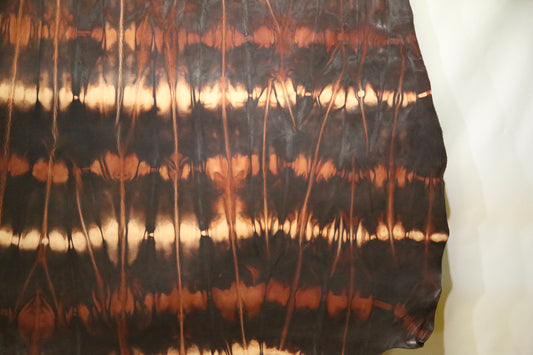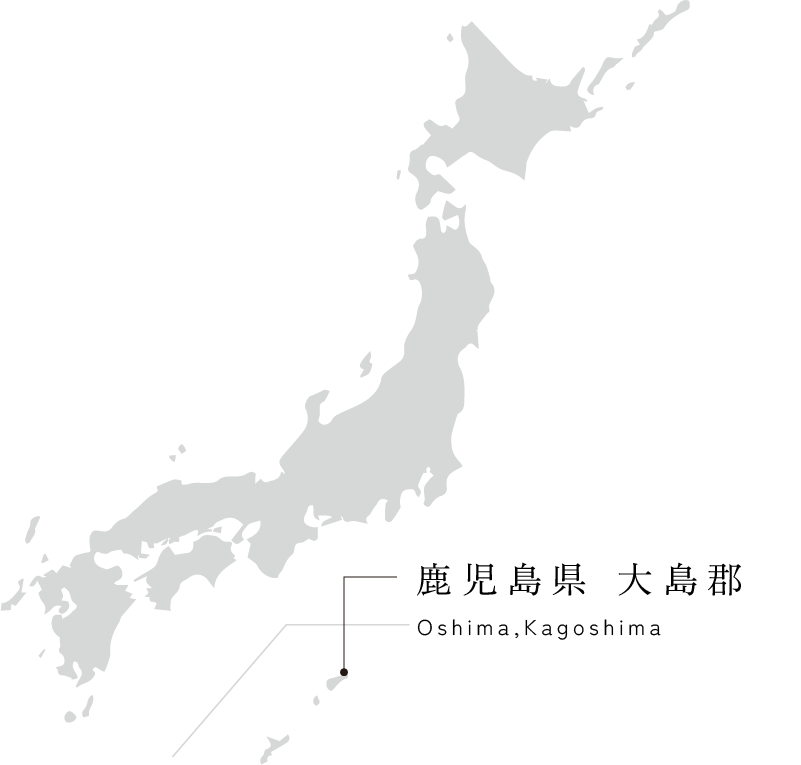
Mud dyeing creates miraculous patterns
Amami Oshima Mud Dyeing
Mud dyeing is a dyeing method used for the world-famous traditional industry of Amami, which belongs to Kagoshima Prefecture, "Authentic Oshima Tsumugi," with a history of 1,300 years. Mud-dyed leather is leather that is dyed a dark brown color using a dye made by boiling and naturally fermenting chips of the "techi" tree (scientific name: wheel plum) that grows naturally on the island, and mud that is rich in iron and has small, round particles that are only found in certain areas of Amami. Mud-dyed leather, which was created over the years to explore new possibilities for dyeing leather while preserving traditional craft techniques, expresses miraculous patterns and unique individuality, such as deep black and brown hues and shibori patterns that are different from chemical dyes.
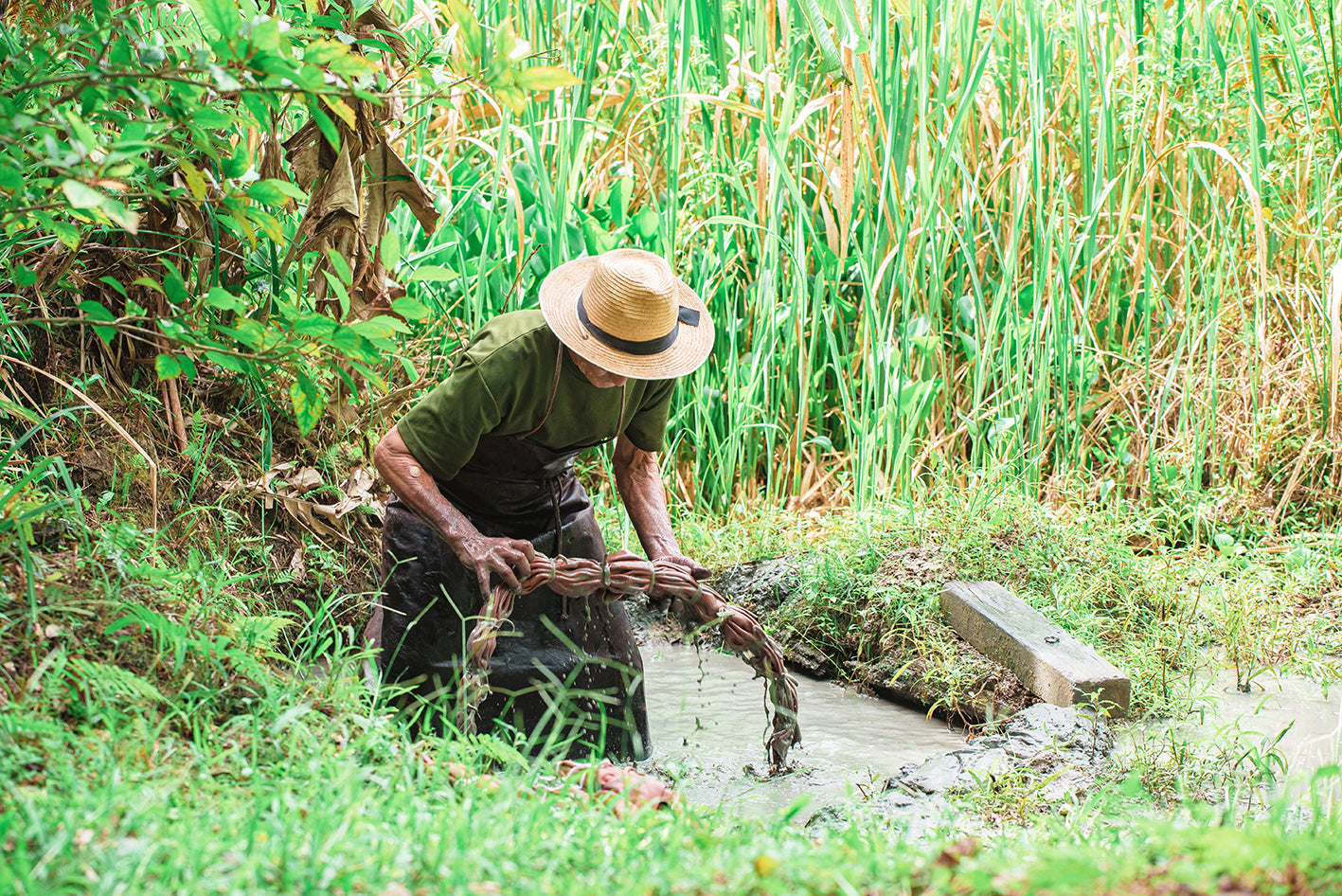
Amami Oshima and Mud Dyeing
Kagoshima Prefecture/Amami Oshima is a place where untouched nature remains.
Mud dyeing has been practiced for a long time on this island, located close to the main island of Okinawa. All processes are carried out by hand by artisans on the island, and mud dyeing is one of the island's important industries.
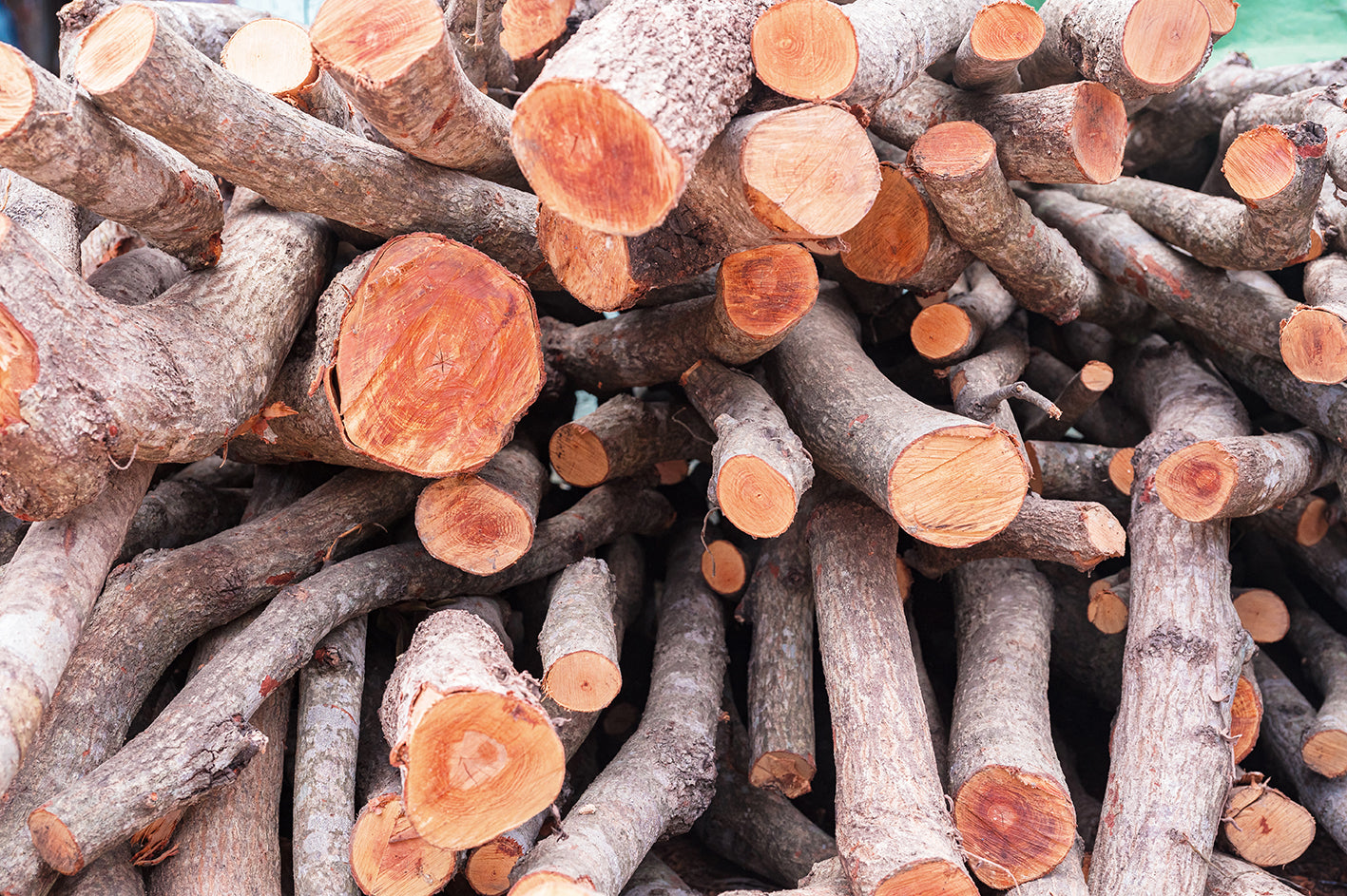
A tannic red wine grown in sea breeze and fertile soil.
Mud dyeing is based on plant dyeing, which uses the techi tree (wheel plum) that grows naturally on the island. The techi tree harvested on Amami Oshima contains a high concentration of tannic acid due to the strong sea breeze and fertile soil, making it extremely suitable for dyeing.
*The red part in the center is tannin.
*Because techi trees are cut down leaving about 1m of their trunk,
After 7-8 years it can be used again as a dye.
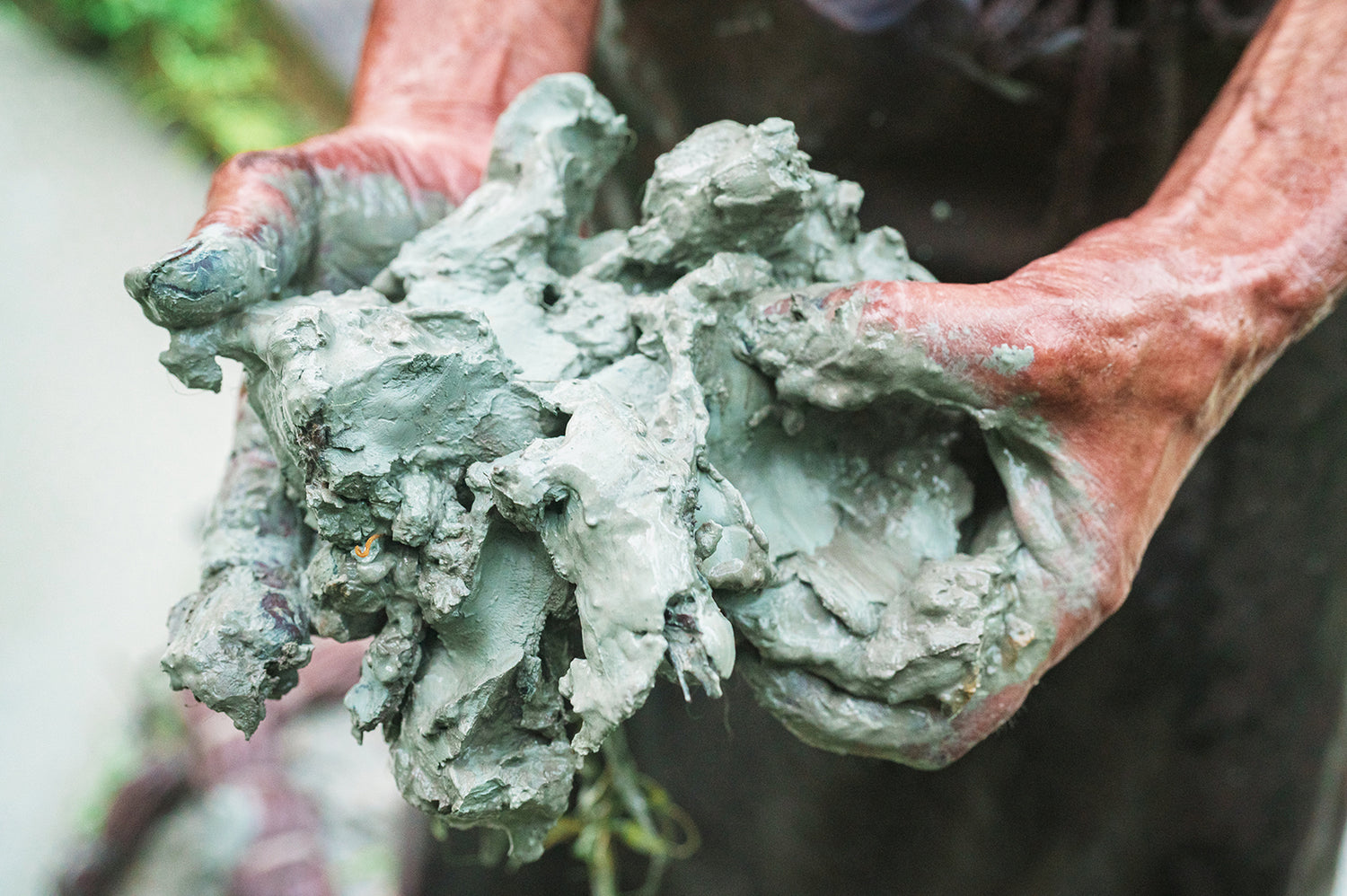
The deep red soil of Amami Oshima
The mud from Amami Oshima used in mud dyeing has characteristics such as fine particles, roundness, and abundance of naturally occurring iron. Furthermore, because the soil is red clay, which is rich in naturally occurring iron, it reacts with the abundant dyed tannins, changing the color from brown to blackish brown. It is this iron mordant that expresses the unique colors of Amami. The ground in areas such as rice paddies is dug to create depressions, and the surrounding mud is poured in to increase the concentration of iron. The fine particles are the result of the action of microorganisms; the rice paddies used for dyeing are located at the foot of steep mountains, and mineral-rich water flows in from the mountains, providing food for the microorganisms, which become active.
Line up
The brown pattern is created by the craftsmanship and the power of nature
The Amami-specific dark brown leather is made by hand by skilled craftsmen using mud dyeing, a dyeing technique used in the authentic Amami Oshima Tsumugi silk weaving that boasts a 1300-year tradition. In addition, by adding various tie-dyeing techniques, the pattern created by the original leather color, the brown color of the tea tree, and the dark brown color of the Amami mud brings out a unique individuality. This pattern is also expressed in various patterns thanks to the accumulation of many years of experience and knowledge.
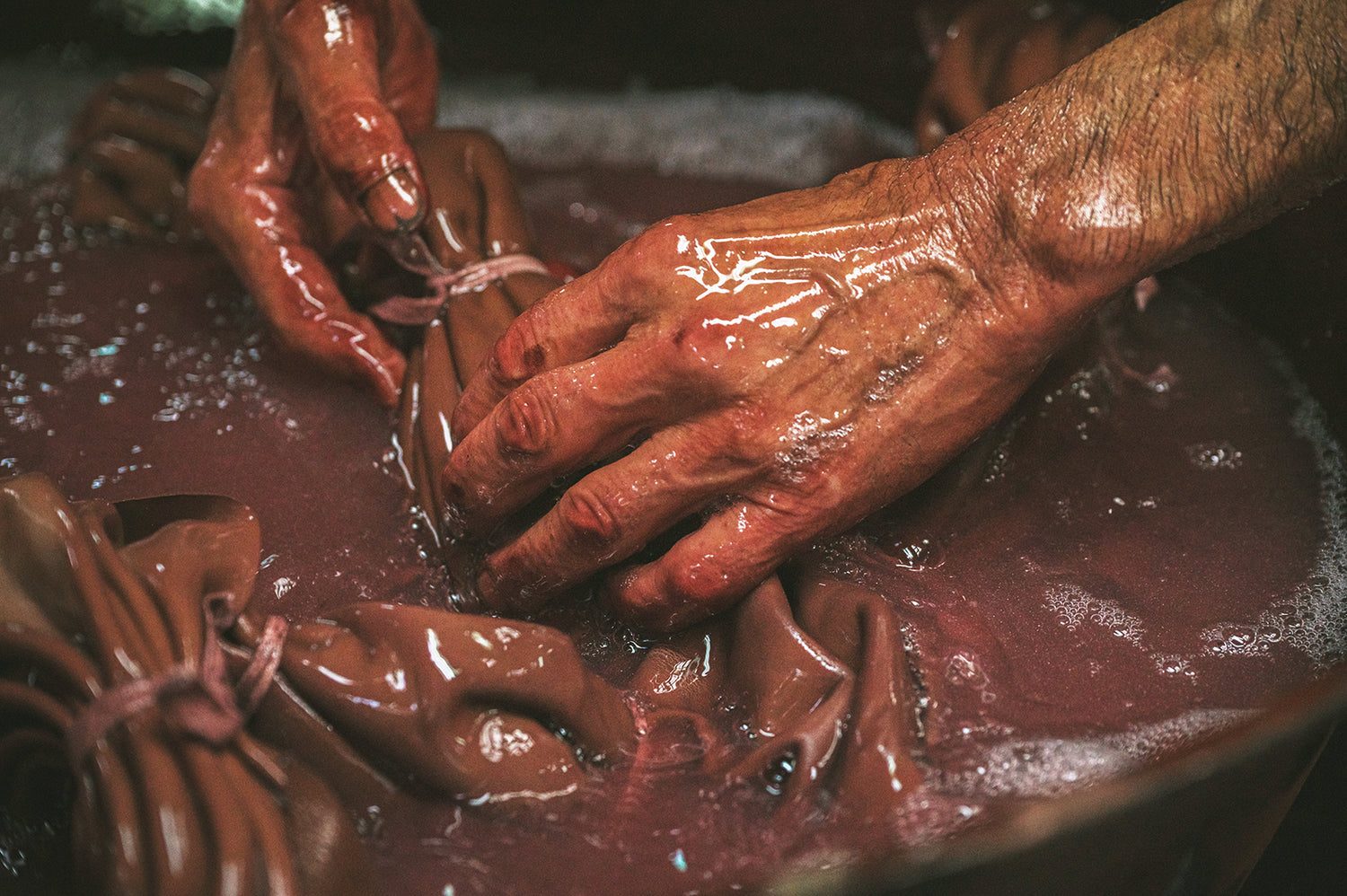
Repeatedly rub with hands
Each piece of leather is hand-tied to ensure that it is dyed in the desired pattern. With years of experience, the craftsman pinches, folds, and ties the pleats in different ways depending on the dyeing pattern. This manual work is what gives the leather its unique personality and creates miraculous patterns.
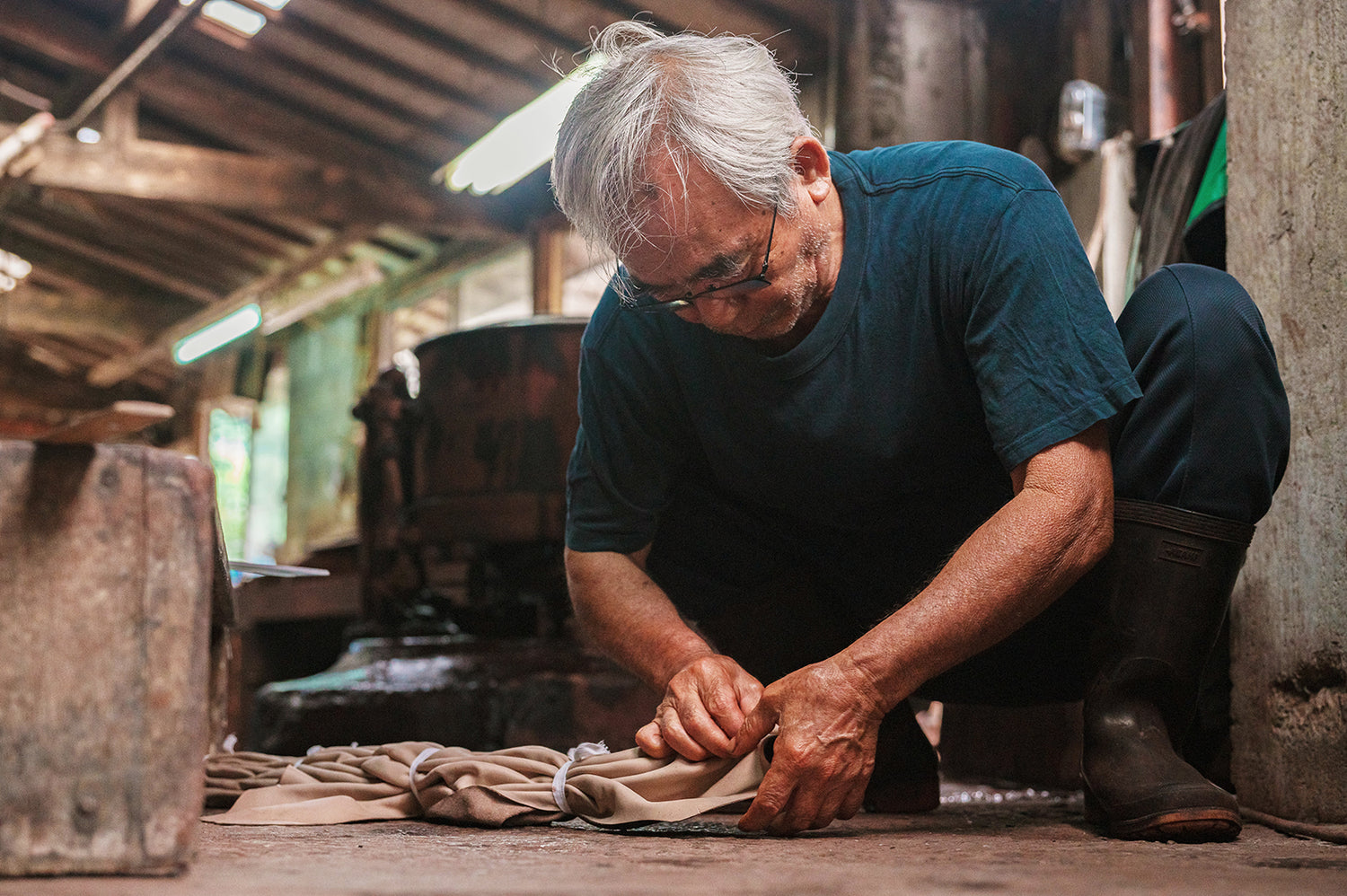
Binding and folding by hand
The leather to be dyed is hand-tied one by one to match the desired pattern. With years of experience, the craftsman pinches, folds, and ties the pleats, and changes the tying method depending on the dyeing pattern. It is this manual work that expresses unique individuality and brings out the miraculous patterns.
Until leather is made
-

1. Finely grind the techi tree into chips
The island's native techi trees are finely chipped using a grinder. It is important to chip the harvested techi trees before they dry out and then move on to the next process.
-

2. Boil the chips
Approximately 600 kg of chipped tea tree wood is placed in a large pot and boiled for over 16 hours. When the water starts to boil, the workshop is filled with smoke and a unique, slightly sweet aroma.
*The fuel used is dried chips from the previous cooking session, which are used as firewood. -

3. Repeated boiling
The boiled techi wood chips are manually removed from the pot.
Then add water and boil again. -

4. Ferment and oxidize for several days
The extract of the techi tree is extracted by boiling, and then left to oxidize for several days, gradually deepening in redness. It takes about a week from pasteurization to fermentation and oxidation to complete the dye.
The dye has a viscous, sticky consistency and a unique scent. -

5. Creating a tie-dye pattern
The leather to be dyed is hand-tied one by one to ensure it is dyed in the desired pattern. With years of experience, the craftsmen use different tying methods to pinch, fold, and tie the pleats, depending on the dye pattern.
-

6. Increase the dye concentration with lime water
Lime water (alkali) is used to increase the concentration of the dye and neutralize the tannins in the dye from the tachi tree.
The lime water acts as a glue that binds the tannins in the tatami wood. -

7. Rub and dye
The dye is done by kneading the fabric firmly with bare hands. The hands are moved back and forth to knead the fabric, lathering the dye liquid and exposing it to air, then knead, squeeze, and knead again. Then, half of the dye is discarded and half of the new dye is added to increase the color intensity.
-

8. Mix and knead the mud with your feet
The mud that has accumulated under the komori is stirred with the feet and the leather that has been dyed with techi tree is rubbed into it, and the iron combines with the tannins in the techi tree, dyeing it a very deep brown color. This series of steps (dyeing with techi tree → dyeing with mud) is repeated many times depending on the desired color.
-

9. Rinse in the river
A river that serves as a washing spot.
The leather dyed with mud is washed in the clean upstream river. The fine particles of mud are difficult to wash away unless the river's water is running. The mud is washed away carefully and painstakingly in the slow-moving current. -

10. Drying
The leather washed in the river is then dried in the fresh air of Amami Oshima, surrounded by the natural beauty of the island. Once dry, the "Amami Oshima Mud Dye" process is finally complete.
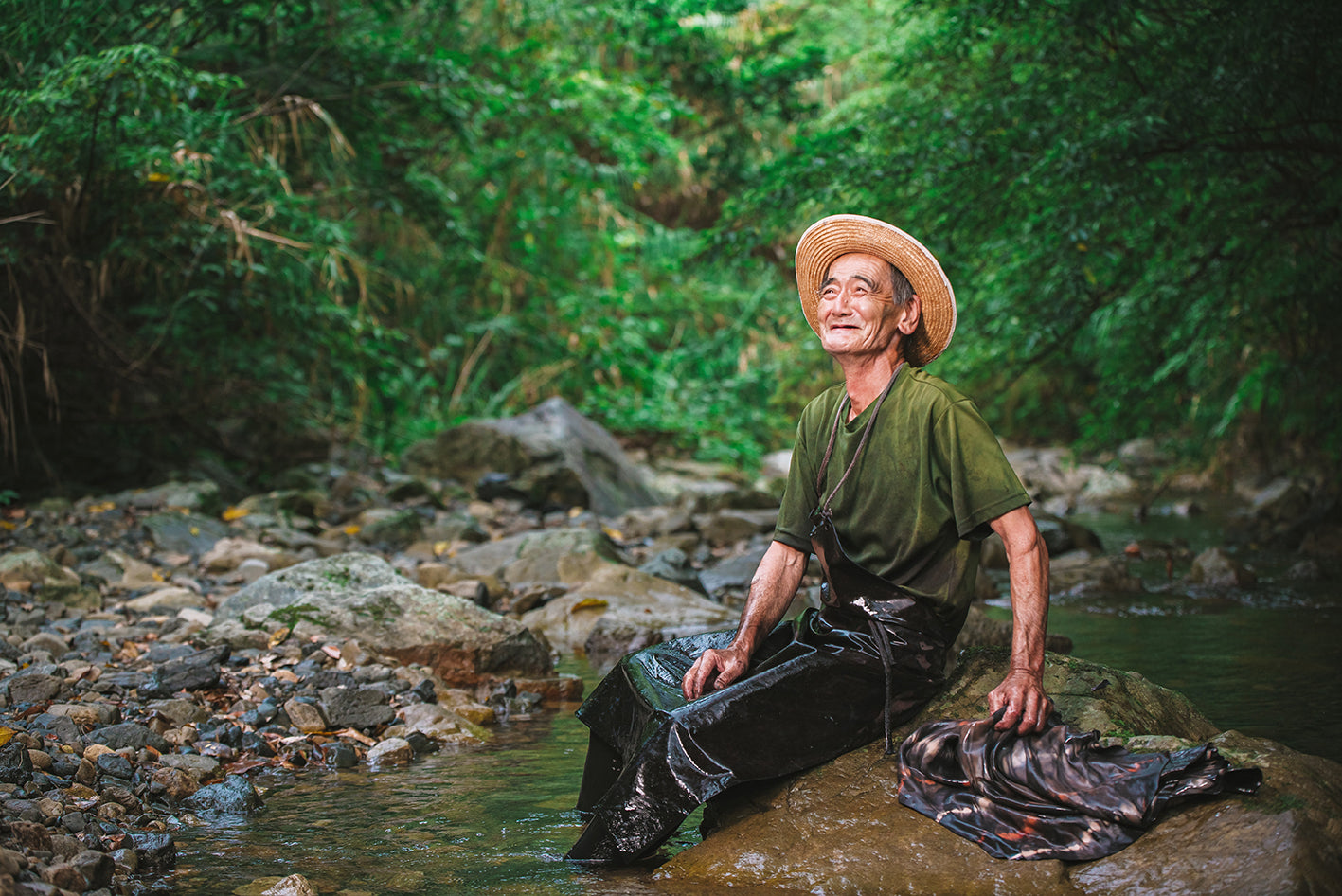
Mud Dyeing
Junichi Higo
In around 1965, he started working as an apprentice at a mud dyeing factory in Ariya. He has won numerous awards in the dyeing category at authentic Amami Oshima Tsumugi contests. In addition to dyeing Oshima Tsumugi, he also handles requests for apparel dyeing and is active as a mud dyeing model. He is a pioneer of mud dyeing.
Wear this leather
-
Cowhide / Kip leather / Amami Oshima mud-dyed leather / Line-dyed
DKS-01Regular price ¥48,755 JPYRegular priceUnit price per -
Sacoche / Amami Oshima mud dye / Circle tie / Cowhide
DKE-P-01Regular price ¥38,500 JPYRegular priceUnit price per -
Folding fan / Amami Oshima mud dye / Spot dye / Cowhide
DKM-F-01Regular price ¥33,000 JPYRegular priceUnit price per -
Sacoche / Amami Oshima mud dye / Circle tie / Cowhide
DKE-S-01Regular price ¥17,600 JPYRegular priceUnit price per


















